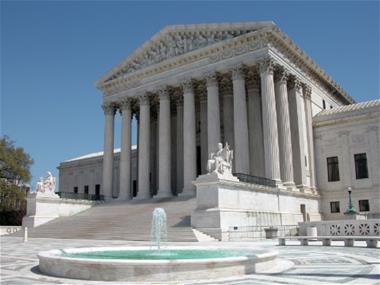
In its second opinion of the term, the Supreme Court ruled that a police officer should have been granted qualified immunity when he shot at a car whose driver had led police on a high-speed chase to stop it instead of waiting to see if spike strips worked.
In Mullenix v. Luna, Israel Leija Jr. led officers on an 18-minute chase at speeds between 85 and 110 miles an hour after officers tried to arrest him. Leija called police twice saying he had a gun and would shoot police officers if they did not abandon their pursuit. While officers set up spike strips under an overpass, Officer Mullenix asked his supervisor via dispatch if his supervisor thought shooting at Leija’s car to disable it was “worth doing.” His supervisor told Officer Mullenix to wait to see if the spike strips worked. Officer Mullenix then learned an officer was in harm’s way from Leija beneath the overpass. Officer Mullenix shot at Leija’s vehicle six times killing him but not disabling his vehicle. Leija’s estate sued Officer Mullenix claiming that he violated the Fourth Amendment by using excessive force.
State and local government officials can be sued for money damages in their individual capacity if they violate a person’s constitutional rights. Qualified immunity protects government officials from such lawsuits where the law they violated isn’t “clearly established.” In short, qualified immunity is intended to protect “all but the plainly incompetent or those who knowingly violate the law.”
The Fifth Circuit denied Officer Mullenix qualified immunity applying a rule that police officers may not use deadly force against a fleeing felon who does not pose a sufficient threat of harm to the officers or others. The Supreme Court concluded that this framing of the qualified immunity inquiry was too general.
“In this case, Mullenix confronted a reportedly intoxicated fugitive, set on avoiding capture through high-speed vehicular flight, who twice during his flight had threatened to shoot police officers, and who was moments away from encountering an officer at Cemetery Road. The relevant inquiry is whether existing precedent placed the conclusion that Mullenix acted unreasonably in these circumstances ‘beyond debate.’”
According to the Court, none of its high-speed chase precedent “squarely govern[ed]” the facts of this case. “Given Leija’s conduct, we cannot say that only someone ‘plainly incompetent’ or who ‘knowingly violate[s] the law’ would have perceived a sufficient threat and acted as Mullenix did.” Officer Mullenix did not have to wait to see if the spike strips worked because they present dangers of their own to officers and those who encounter them at high speeds and they don’t always work.
The Court’s opinion is unauthored and was decided without oral argument. Justice Sotomayor dissented.
New, Reduced Membership Dues
A new, reduced dues rate is available for CAOs/ACAOs, along with additional discounts for those in smaller communities, has been implemented. Learn more and be sure to join or renew today!
